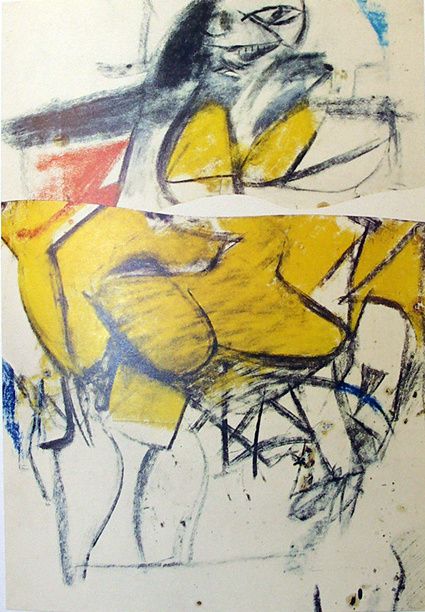What a way to end off the Arts in NYC seminar – hearing Mozart’s “Sinfonia Concertante”, perhaps his “crowning achievement in the field of the violin concerto” (Alfred Einstein, not to be confused with Albert Einstein)! I hardly feel qualified to talk about such an extraordinary piece, but I will nonetheless attempt to do it justice.
Performed by our very own Queens College Orchestra, the piece consists of three movements: Allegro Maestoso (moderately fast), Andante (walking pace; not too fast, but not too slow), and Presto (faster than allegro maestoso). This last movement was my personal favorite. In this performance, there was a violin soloist and a viola soloist, both of whom were fabulous. A viola is slightly larger and has a lower key than a violin, and taken together the two complemented each other very nicely. The vibrato of the violins was also a very distinguishable and praiseworthy characteristic of the concert, adding to the emotion and feeling of such classic and inspiring music. Even though there were defined movements, some parts didn’t fit in to the given movement; as an example, while the presto was pretty fast, there were some slower parts embedded in it as well.
It tends to be taken for granted that Mozart and other famous European composers were the “great” composers. However, actually going to a concert that performs their music gives me a MUCH greater appreciation for just how great they were; there is something so mesmerizing about going to a famous classical music concert and hearing the music played live. For me, it gave a taste of the emotion, depth, and energy of classical music. It now seems readily apparent to me what the people in 18th century Europe loved so much about this type of concert. If only more young people would go to these concerts, they may very well add classical music to their list of favorites.


 Christiansen also said that “the 15th century is the first great century of portraits”. Before this time period, it was only aristocrats or royalty who had them, and most were made for tombs. (This could very well be where Frans Haals got the idea to start painting for the upper-middle class.) Mr. Christiansen also said that these portraits experiment with “portraiture, and the age-old notion of identity. This is the foundation on which European portraiture is based.” Paintings and sculptures from masters like Donatello, Filipo, Lippi, Boticelli, Mantegna, and Bellini will be displayed, among other artists.
Christiansen also said that “the 15th century is the first great century of portraits”. Before this time period, it was only aristocrats or royalty who had them, and most were made for tombs. (This could very well be where Frans Haals got the idea to start painting for the upper-middle class.) Mr. Christiansen also said that these portraits experiment with “portraiture, and the age-old notion of identity. This is the foundation on which European portraiture is based.” Paintings and sculptures from masters like Donatello, Filipo, Lippi, Boticelli, Mantegna, and Bellini will be displayed, among other artists.




 This got me thinking: These children will be deprived of a proper education. If that is the case, who knows how many potential artists, musicians, actors, and curators could have been among these unfortunate children, but in the end cannot become them because of the corrupt shelter system and their lack of education? And this doesn’t just have to apply to the arts; these children could have also become great doctors, attorneys, businessmen, politicians, and whatever else, but now cannot because of their lack of a home and education. Attainment of these professions would also likely afford them financial independence in the future.
This got me thinking: These children will be deprived of a proper education. If that is the case, who knows how many potential artists, musicians, actors, and curators could have been among these unfortunate children, but in the end cannot become them because of the corrupt shelter system and their lack of education? And this doesn’t just have to apply to the arts; these children could have also become great doctors, attorneys, businessmen, politicians, and whatever else, but now cannot because of their lack of a home and education. Attainment of these professions would also likely afford them financial independence in the future.

